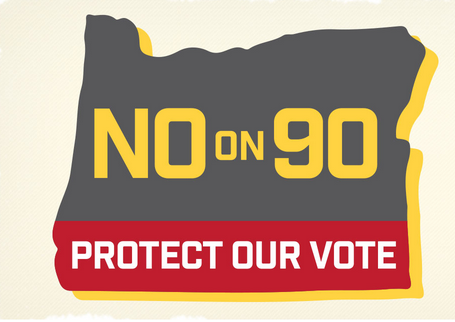Since the Oregon Department of State Lands permit application #37712 has had a thorough review by the Department, I have several questions regarding information that should have been placed into the record by the Oregon International Port of Coos Bay.
According to your Findings document:
– Page 4 it states the following;
“…* The Port has established the need for the proposed multi-berth, multipurpose marine cargo facility. Even if the Jordan Cove Liquefied Natural Gas (LNG) terminal project never materializes, the record indicates that the Port will still construct the multi-berth, multipurpose marine cargo facility. In issuing this permit to the Port for a multi-berth, multipurpose marine cargo facility, the Department is not making a finding regarding need for or public benefit from a terminal facility that would import or export LNG. The record supports the conclusion that market opportunity exists for containers, breakbulk cargoes (e.g., metal projects, forest products, and project cargoes), logs, automobiles, liquids bulks, grain, and dry bulks. Ports in the Pacific Northwest region have experienced sustained growth of cargo volumes.
ORS 196.825(2)(a) provides in relevant part that “When the applicant for a permit is a public body, the director may accept and rely upon the public body’s finding as to local public need and local public benefit.”
To summarize: The Port has supplied sufficient information to demonstrate that this project is not speculative, and that issuing a permit is not likely to result in a “speculative removal or fill” in waters of the state….”
DSL Permit – electronic page 37 states;
“Because the Port is an expert in both port facilities and economic development, its determination of need should be relied upon by DSL. In fact, the Removal/Fill Statute specifically authorizes DSL to rely on the Port’s determination of need and benefit. The statute provides that “when the applicant for a permit is a public body, [DSL] may accept and rely upon the public body’s findings as to local public need and local public benefit.” Public bodies are defined in ORS 174.109 (a definition referenced in the Removal/Fill Statute) as “state government bodies, local government bodies and special government bodies.” The Port is a “special government body” under ORS 174.117 and. accordingly is a “public body” under the Removal/Fill Statue whose determination of pubic need and public benefit should be relied on.”
QUESTION #1:
Since both the 2003 and 2004 analysis studies that were done by BST Associates and Parsons Brinkerhoff did not recommend the Oregon International Port of Coos Bay develop a marine cargo facility in the Port of Coos Bay, did the Oregon International Port of Coos Bay submit the findings of the following newer updated studies that were ordered by the Port Commissioners and if so, how can I obtain copies of these newer updated reports?
At an October 1, 2009 Oregon International Port of Coos Bay Commission meeting (- pages 9-10) Port Commissioners authorized an Industrial Cluster Study that was to be done by Bruce Facility Planning Consultants, LLC. The study was to work to identify specific target industries for the Port and their partners to pursue additional economic development opportunities. The base cost of the study was $15,000 for a general overview of the community, its strengths and weaknesses for economic development. The second element of the study was for $25,000 and would look specifically at the Jordon Cove Energy project and identify specific target industries for a combined cost of $40,000.
At a March 10, 2011 Oregon International Port of Coos Bay Commission meeting minutes(- pages 6-8 ), Port Commissioners authorized a conceptual alternative study in the amount of $163,600 to be done by Parsons Brinkerhoff for the development of a bulk export facility on Coos Bay’s North Spit. Parsons Brinkerhoff is the consulting services of the professional services arm of Balfour Beatty. Balfour Beatty is a global construction infrastructure delivery firm that has about $15 billion of revenues and offices in every country of the world with the exception of Libya, where that agent office just closed. Previously in 2003 Parsons Brinkerhoff had done an analysis study for the Port concerning the viability of developing a modern marine cargo facility in the Port of Coos Bay entitled;
“Feasibility Analysis For a Modern Marine Cargo Facility in the Port of Coos Bay, Oregon”, May 2003, Prepared by PB Ports and Marine, Inc – A Parsons Brinckerhoff Company in Association with the Benkendorf Associates Corp. Johnson- Gardner, LLC.
In 2002 BST had also done a Port analysis study entitled; “Evaluation of Marine Cargo Opportunities for the Port of Coos Bay, Oregon”, Final Report, April 2002, BST Associates, Bothell, WA
As stated in my comment letter e-mailed to DSL on Feb 12th 2011 at 4:34 p.m. (pages 6-7), both consulting firms came to the same conclusion that a Marine Cargo Facility in the Port of Coos Bay would most likely be a probable money loser and risky business adventure. They did not recommend the Port pursue such a facility. Key sample pages of these reports were sent to DSL by postal mail on 1-10-11.
QUESTION #2:
The Oregon International Port of Coos Bay will plan on building the multi-berth, multipurpose marine cargo facility even if the Jordan Cove Liquefied Natural Gas facility doesn’t materialize, so I am wondering where exactly in the record the Port has listed what their actual costs will be to build and operate this multi-berth, multipurpose marine cargo facility and how they will plan on paying for these expenses? Would it be legal for the Port to have financial obligations of this order? [There has been no vote of the people on any of these financial obligations undertaken on behalf of the Port District taxpayers by the “non-elected” Port Commission.]
Marine Terminal Slip costs should include the following:
1) Land acquisition costs. ( Both for the proposed marine slip and dredged material storage areas. )
2) Construction material costs.
3) Construction and operational labor costs.
4) Maintenance costs.
5) Dredged material removal, transport and storage costs.
6) Water and air quality monitoring costs.
7) Bullard tractor tug costs including labor to operate the necessary tugs.
8) Marine Terminal Slip parking area costs. [ Not in slip design but will be required. ]
9) Insurance premium costs for accidents including those from natural causes such as earthquakes and/or tsunamis.
10) Cultural Resource monitoring and impact costs, particularly since Archeological artifacts being found on the site are a high probability.
QUESTION #3:
According to your Findings document
– Page 3 states the following;
“…From May 9, 2011 to the date of the final agency decision, December 21, 2011, the Department engaged in considerable dialogue with the Port concerning legal, factual and policy issues raised by public and agency comments and by the Department staff analysis. Several times, the Department asked the Port to supply additional information to address particular concerns. The Port provided the Department with packets of additional information on May 9, 2011, July 15, 2011, November 1, 2011, and December 5, 12, and 15, 2011. The following findings draw upon all information in the record, whether from public or agency comments, submissions by the Port or analysis and investigations by the DSL staff….”
How are citizens able to review all these documents that have been submitted by the Oregon International Port of Coos Bay? Are they available for review in electronic and/or hard copy format? Are these documents available for review online? What process is required for citizens to be able to review all these documents?




Misdirection or redirection, by a “corporate” port intent on making a profit
Record numbers of dolphins, dugongs and turtles have washed up dead on Gladstone’s shores during the past year. Oysters have disappeared from the harbour pylons. Sharks and stingrays are being caught with red rashes.
Large numbers of crabs are presenting with deformed shells, while barramundi and other scale fish are being pulled from the waters with bulging red eyes and red raw sores.
Two contrasting explanations have been offered.
The first is that last year’s floods, which turned the harbour waters fresh and brought an abundance of barramundi from the dams to the sea, disrupted the ecological balance.
The second is that dredging of Gladstone harbour to enable Queensland’s multibillion-dollar liquefied natural gas industry to export coal-seam gas to Asia has stirred up misdeeds of the past and poisoned the water.
http://www.theaustralian.com.au/news/features/bottom-of-the-harbour/story-e6frg6z6-1226233599014
Fracking LNG, the world will love us. The US is now the model for what can be done with gas drilling, and they want to increase production to sell it, and ship it from here.
They get pushed back one step, and they move forward two. Jobs, that’s what everyone wants, this is the price you will pay for “THESE” jobs. Where else can these people go when their land is ruined, if they come here they will see the collaborators and conspirators of their demise. Neither political party has any plans for stopping this environmental disaster in the making.
Continued support for either party is futile.
http://www.youtube.com/watch?v=8_axZpB0wZI
Good question. Not sure but The World has sure been pimping for ORC lately.
Will ORC have anything to do with the dredged material? Is there a possibility that they may process that material through their plant? Why has the Port assumed responsibility for studies pertaining to City Of Coos Bay’s water treatment plant? Could it be that they would like to saddle the taxpayer for the costs associated with improvements necessary for the old Warehouser ocean outfall? If the Ocean outfall is improved would it provide necessary infrastructure for a chip plant that ORC could sell their mined material to? Is it a conflict of interest for a Port official to indirectly benefit monetarily by seeding the path for ORC? Is there a Port Official involved with the day to day operations of ORC? Would ORC transport by rail mined material to the marine cargo facility for distribution of their product ? Is ORC an Australian owned company? Is there a port official who is a native Australian? Inquiring minds want to know…